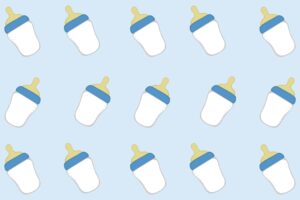What is Mastitis and how is it Treated?


Mastitis occurs in 3-20 percent of breastfeeding women, depending on the definition used. While it is most common in the first 6 weeks after delivery, it can happen anytime during breastfeeding, and for some women may occur repeatedly.
A bacterial infection is usually the culprit in mastitis, but this is not always the case and may instead be the result of poor breast drainage (such as in the case of a plugged duct). The typical picture of mastitis is a woman who has a tender, red, hot breast who may also have an associated fever and flu-like aches and fatigue.
Certain situations make mastitis more likely. These include a poor latch that has resulted in nipple trauma (with open sores that bacteria can easily enter) as well as maternal illness or stress. Additionally, anything that leads to incomplete breast emptying will allow milk to sit in the breast and become a perfect substance in which bacteria can grow. This can happen in many scenarios: infrequent or shortened feedings (such as when trying to get a baby on a schedule as opposed to on-demand feeding), a tight bra putting pressure on the breast and thus not allowing proper duct drainage, a plugged duct or nipple pore, rapid weaning, or oversupply.
If you start to exhibit symptoms of mastitis, you should reach out to your doctor or midwife. The most important thing to do is to continue to remove milk from the affected breast! Many women are afraid to nurse from a breast that has mastitis, but keeping the breast drained is the best thing you can do, and this milk will not harm your baby (do check with your pediatrician if you have a preterm or medically fragile infant first). Breast massage can help with milk removal, as can applying heat before a feeding.
It is important to take care of yourself when you have mastitis. This means plenty of rest and hydration. Try to eat well, though this may be difficult if you feel sick. Ibuprofen or acetaminophen can help with fever and pain, and both are safe while nursing. Applying ice after feedings can help with swelling and engorgement.
Antibiotics (either by mouth or via an IV if you are very sick) may be needed if your mastitis does not improve with these initial measures in 12-24 hours or if you are very ill. Your doctor or midwife may also want to culture your milk to make sure the antibiotic they choose will kill the bacteria causing your mastitis (this is not needed in everyone).
Most women who take antibiotics respond rapidly. If symptoms continue after a few days, other problems should be considered such as a breast abscess. In very rare situations, inflammatory breast cancer can present like mastitis, but keep in mind this is a very rare exception.
Reviewed by Dr. Sara Connolly, December 2018
Powered by Bundoo®










































